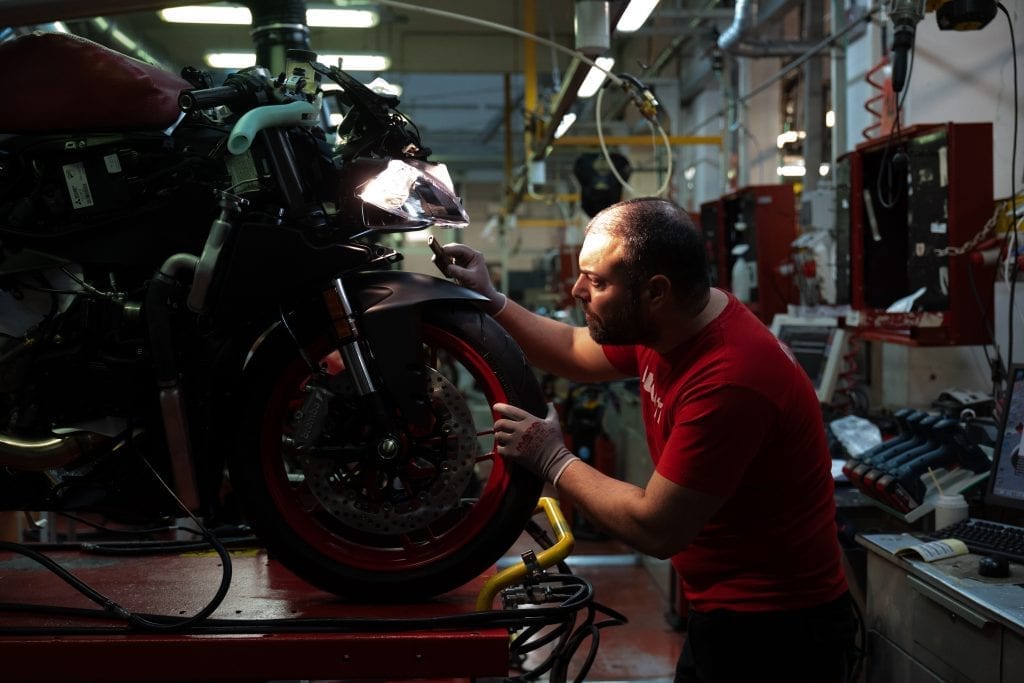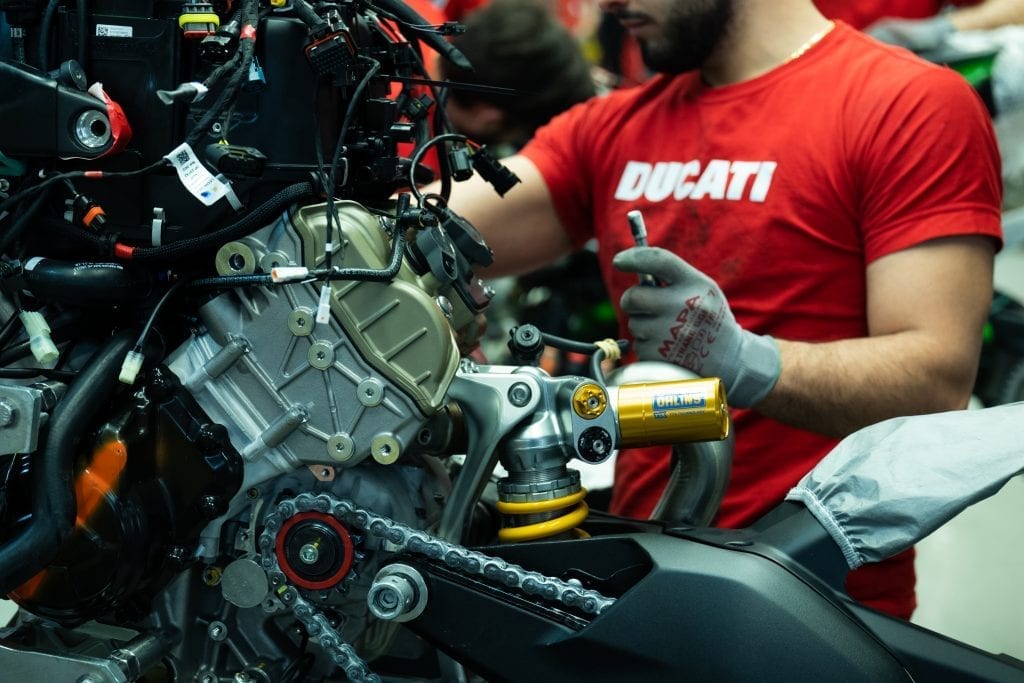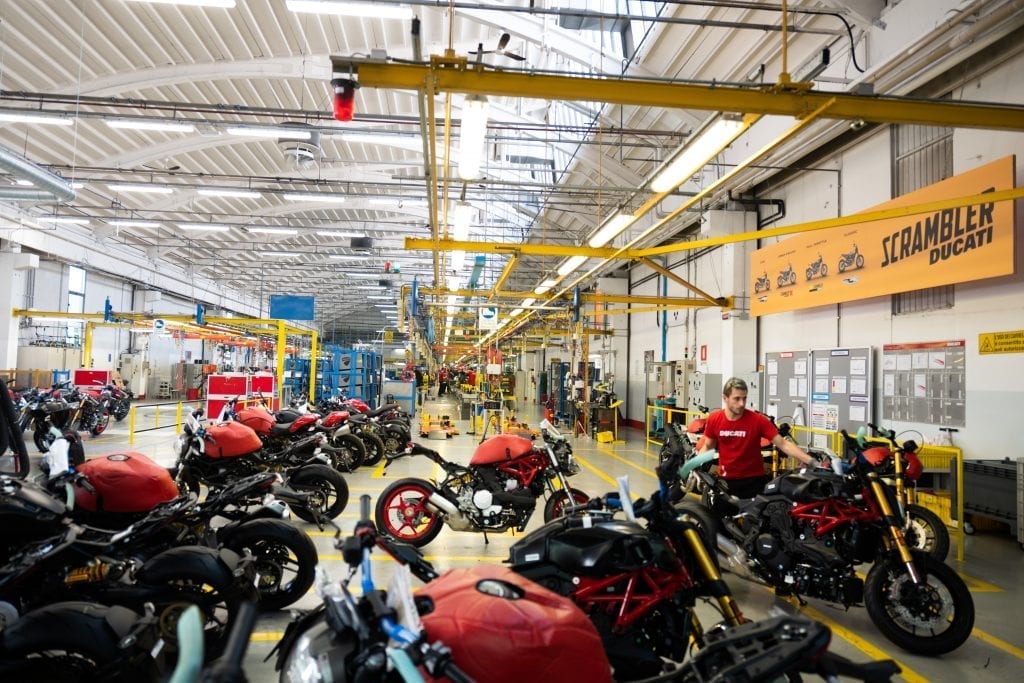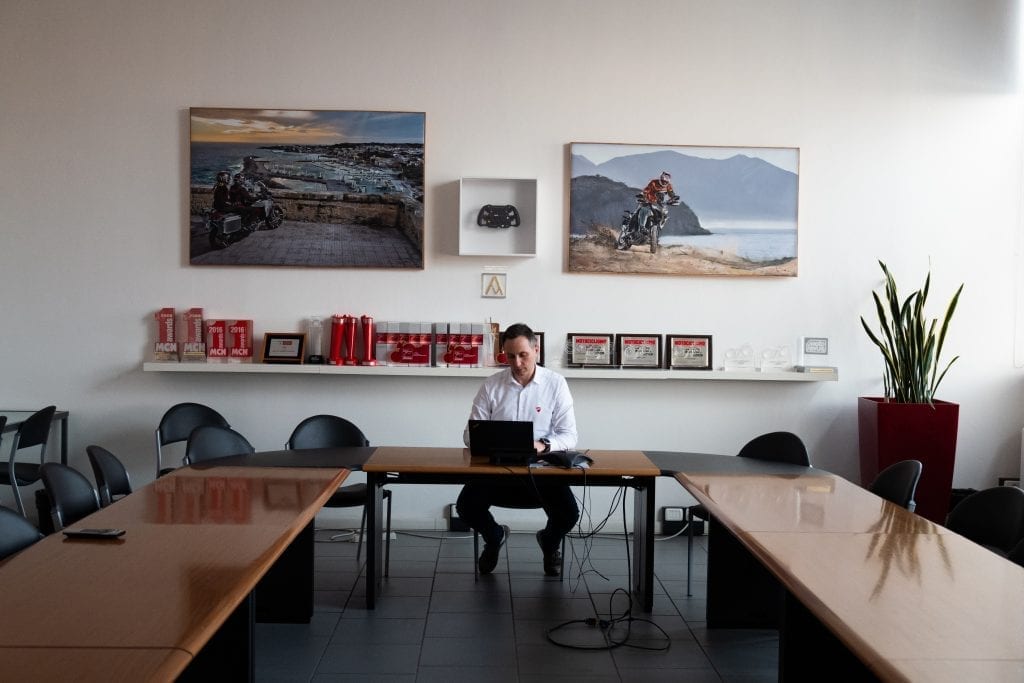Technology piloted on the track is implemented in Ducati road bikes to ensure customers experience the sleekest, smoothest and safest rides possible.
A Ducati MotoGP bike is unmistakable. If not for its glossy red chassis and airplane-inspired winglets, one could recognize a Desmosedici from a rival bike solely by the distinct hum of its four-stroke V4 engine.
The Desmosedicis are made to look suave—they’re designed by Italians, after all—but it’s what’s inside that distinguishes them from zippy Honda RC213Vs or Yamaha YZR-M1s, like the Ducati four-cylinder engines and the company’s signature EVO 2 TCF throttle operating system.

These specs read like gibberish to anyone unacquainted with the world of MotoGP, but the innards of a Ducati racing bike have implications beyond the race track, from the highways of Tokyo to the lavender-lined roadways of France.
“Racing activity is the test bench for new technology, before it enters into mass production,” explains Konstantin Kostenarov, the Chief Technical Officer of Ducati.
The cavalry of Ducati road bikes are directly influenced by the tech that’s tested on the race track, he said. Racing is in the DNA of every Ducati motorcycle, whether made for MotoGP or the open road.
Consider the Panigale V4 R. The consumer-grade bike, whose specs are tailored to the safety regulations of public roadways, vibrates with 221 horsepower at over 15,000 rpm. Like the racer’s Desmosedici, the Panigale breathes with Akrapovič type-approved exhausts and derives its velocity from a four-cylinder engine design. Most importantly, the bike is safe. With such high horsepower, the wheels are kept on the ground thanks to a racer-tested traction system and a Ducati Quick Shift that allows the rider to shift up the acceleration without touching the clutch.

The technology piloted on the track is implemented in Ducati road bikes to ensure customers experience the sleekest, smoothest and safest rides possible. Here’s where Lenovo, Ducati’s key technology partner, comes into play. Thanks to Lenovo’s High-Performance Computing (HPC), Ducati can adapt its racing technology to the road with unprecedented speed and security.
“In racing, we know how to collect a huge amount of data and analyze this data in such a way that it can give us the advantage to win the race,” Rendina said. This process, of quickly translating data to the bike interface, “is directly transferred to our road bikes.”
Speed gives Ducati the consumer advantage in more ways than one. The high computing power of Lenovo solutions allows Ducati designers to quickly adapt their algorithms and racing bike technology to consumer-friendly models. Two years ago, for example, Ducati introduced winglets to its racing bikes—a feature adapted from airplane technology to enhance the vehicle’s aerodynamics. In November of last year at the Milan Motorcycle Show (EICMA), the company unveiled a road bike with winglets inspired by the racing bikes.
Ducati Corse is one of the primary influences on the brand’s identity and the customer’s experience, Kostenarov said, and consumers expect the same technology that enables MotoGP bikes to fly through the finish line to be available at Ducati showrooms.

With the motorcycle industry at a technological crossroads, companies must balance the features and aesthetics for which they are known, while adapting to a high-tech landscape. As Ducati weathers this transformation, Lenovo is helping to facilitate an “increase in the speed of response of business requests, and a growth of the customer’s experience,” according to Kostenarov.
At the same time, Lenovo’s tools “completely hide the complexity of the technology itself,” a fact that has enabled Ducati to transition to Lenovo hardware and servers quickly and with minimal employee training. Time, as the racing team knows all too well, is a valuable commodity in this business.

Lenovo’s HPC effortlessly process information gleaned from dozens of sensors attached to the bike on the test track. This intel is then uploaded directly to Lenovo ThinkPad P1 workstations and the Lenovo cloud, allowing Ducati employees back at headquarters in Italy to analyze, and eventually implement, the information gained from test races.
“We have more power, more security, more possibilities to use the technology,” Kostenarov said. All of this means Ducati is “quicker to implement new parts … and design new products.” Tested on the track, perfected for the road.
